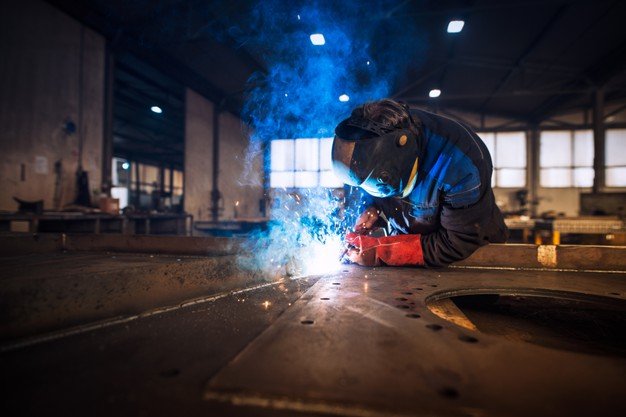PPE standards eyes are numerous and distinct enough that it is easy to get lost in them. In order to help you find your way around, we present them to you in this article with an emphasis on the most frequently used.

The general standard EN 166
Whatever their nature (glasses, visors, masks, face shields, mesh screens…), the accessories ensuring the individual eye protection comply at least with standard EN 166. This is the official European standard harmonized for all eye protection and approved in France by theAFNOR (Association française de normalization) as an official standard NF EN 166. It does not concern the risks associated with radiation of nuclear origin, X-rays, laser emissions or infrared radiation emitted by low-temperature sources. We must distinguish between safety eyepieces and the eyepieces with filtering effect.

It is up to the employer to provide the employee with PPE adapted to the profession he exercises in order to ensure the protection of his eyes and face against risk of projections corrosive liquids, against hazardous radiation or against harmful particles suspended in the air. If you are already wearing eyeglasses, you must wear them over-glasses with the appropriate level of protection. There are also protective glasses with corrective lenses. Note that other activities such as airsoft also require the wearing of eye protection in order to avoid the risks associated with projectile fire and obstacles specific to the environment, such as branches or thorns for example.
Mandatory markings
The general standard EN 166 concerning EPI of the eye must specify the Mandatory marking of temples and eyepieces, but also the level of mechanical resistance which corresponds to impact resistance. The frame and eyepiece must be marked separately, unless they form a whole, in which case the marking will be affixed to the frame. Must also be mentioned the identification of the maker, the level of filter protection and the optical class (from 1 to 3 for continuous, intermittent or occasional work).
The standards EN 169, EN 170, EN 171 and EN 172
Certain professions are particularly exposed to chemical, mechanical, thermal risks or to radiation (laser, infrared, ultraviolet). There is even eye PPE specific to certain trades, such as welding goggles or forestry helmets. The EN 169 standard specifically concerns filters for welding and related techniques. The EN 170 standard groups the PPE for the eye with ultraviolet filters, while the infrared radiation is specified by the standard IN 171. As to sun protection filters for industrial use, they are gathered under standard EN 172 and effectively protect the eyes against strong lights. Brands such as Uvex, Bollé, Delta Plus, Coverguard, Carhartt and Portwest are specialized in this type of individual eye protection.
STANDARDS:
- EN 166: Personal eye protection
- EN 169: Filters for welding
- EN 170: Filters for ultraviolet
- EN 172: Sun protection filters for industrial use

Less widespread specific standards
Unlike the EN 169 standard, the standard IN 175 refers to eye protection equipment but also of the face for the work of welding, cutting, and related techniques. It must take into account the risks of radiation, flammability, as well as mechanical and electrical risks. However, it is to be distinguished from the standard EN 379 for welding filters with variable protection stage or double protection stage. This standard was replaced in 2009 by the standard EN 379 + A1 for the automatic welding filters (or welding filters with switchable step number). They are used in eye PPE for welders or are attached to equipment. The visors, helmets and mesh face shields are characterized by the standard IN 1731 and protect both the eye and the entire face. They can be adapted, for example, to forestry work.
STANDARDS:
- EN 175: Equipment for welding work
- EN 379: Welding filters with variable protection stage or double protection stage
- EN 379 + A1: Automatic welding filters
- EN 1731: Mesh face shield
- EN 1836: Sun protection filter for general use
- EN 12312-1: Sunglasses for general use
- EN 12312-2: Spectacles with filters for direct observation of the sun
Standard IN 1836 dedicated to protection filters against solar radiation for general use was replaced in 2013 by the standard NF EN ISO 12312-1 which applies to all afocal sunglasses (non-corrective) and removable additives designed for protection against solar radiation. It is divided into 5 categories classified from 0 to 4 according to the percentage of filtered light (category 0 does not protect against UV). Finally, know that if you want to observe a eclipse, you will need to equip yourself with safety glasses that comply with the standard NF EN ISO 12312-2.

